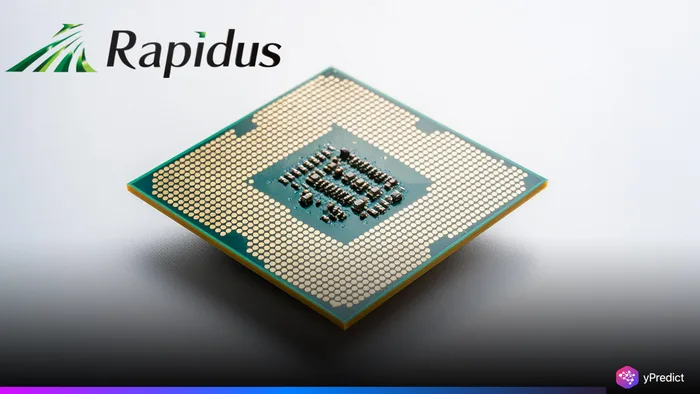
Japan is working to restore its previous supremacy in chipmaking, and Rapidus may be its best chance yet. With government funding behind it, the startup has now passed an early milestone: it has manufactured an advanced chip prototype. This is a significant step in Japan’s tech ambitions, with Rapidus set on becoming a key player alongside TSMC, Intel, and Samsung. With billions of dollars in public funding behind it, the stakes are high, but so is the momentum.
The technical accomplishment isn’t simply a milestone. It is also Japan’s consolidation of an urgent strategy to maintain its role in the semiconductor value chain, now critical to national security and economic development. Rapidus will be seen as a way to diminish the reliance on foreign suppliers and generate private investment. We’re at the start of the journey, but the prototype shows how serious Japan is to re-establish itself as a global semiconductor player.
How Rapidus Plans to Bridge the Innovation Gap
Rapidus was founded with an ambitious goal: to catch up with, and eventually surpass, global semiconductor giants. Unlike traditional chip firms that spent decades building up expertise, Rapidus must leapfrog years of R&D in a very short time. That’s where state support comes in. The Japanese government has pledged more than $3.8 billion to Rapidus to fast-track its research, manufacturing, and international partnerships.
The newly built advanced chip is an early result of this funding. Designed using cutting-edge 2-nanometer process technology, the chip signals Japan’s seriousness in entering the most competitive segment of the market. While production at scale is still years away, this prototype shows that Rapidus is not just making promises, it’s delivering results.
Global Partnerships Power Rapidus’ Fast Progress
One factor that has allowed Rapidus to move faster than expected is the strategic alliances the company has formed. Rapidus has fashioned a partnership with IBM, which assisted in co-developing the 2-nanometer process. Rapidus also partnered with high-ranking research agencies including Japan’s National Institute of Advanced Industrial Science and Technology (AIST) for foundational R&D.
These partnerships provided Rapidus with advanced technology and build on existing knowledge rather than restarting the wheel on new technology. The partnerships are a model of a collaborative relationship, allowing the firm to engage in product execution and not build components from scratch. It is a clear signal that Japan is embedding speed and synergy to compete globally.
Why This Prototype Signals a Shift in Japan’s Tech Strategy
Japan dominated chipmaking in the 1980s, but lost ground due to competition, slower innovation, and trade restrictions. Now, with the global focus on semiconductors for AI, defense, and electric vehicles, the country sees a window to return. The Rapidus prototype could signal a turning point in this journey.
By building an advanced chip, Rapidus proves that Japan can still push the frontiers of hardware design. It also reaffirms the government’s strategy of blending public funding with startup agility. If this model succeeds, it could be used across other high-tech sectors too, from quantum computing to AI processors.
What’s Next for Rapidus and Japan’s Semiconductor Dream
While this prototype is a significant accomplishment, mass production has a few years to go. Rapidus is in the process of establishing a plant in Hokkaido to begin commercial production in 2027. This effort is aggressive, but if Japan wants to play a role in the next cycle of global semiconductor production, it is necessary. Rapidus must focus on scaling, hiring top talent, and developing manufacturing processes.
Challenges include developing a labour force with the new skillsets needed, having a reliable supply chain for raw materials, and international competition. Despite all of this, with government support, a defined route, and a great deal of effort, it may do the impossible.






